Design of Multifunctional Mesosphere-Ionosphere Sounding System and Preliminary Results
Abstract
:1. Introduction
2. System Description
2.1. Transmission Channel
2.2. Sounding Waveform
2.3. Multichannel Receiver
2.4. Miniaturized Antenna
3. Prototype Device
4. Typical Experimental Results
4.1. Mesospheric Sounding
4.2. Ionospheric Sounding
5. Conclusions
Author Contributions
Funding
Conflicts of Interest
References
- Wan, W.; Xu, J. Recent investigation on the coupling between the ionosphere and upper atmosphere. Sci. China Earth Sci. 2014, 5757, 1995–2012. [Google Scholar] [CrossRef]
- Gardner, F.F.; Pawsey, J.L. Study of the ionospheric D-region using partial reflections. J. Atmos. Terr. Phys. 1953, 33, 321–344. [Google Scholar] [CrossRef]
- Igarashi, K.; Murayama, Y.; Nagayama, M. D-region electron density measurements by MF radar in the middle and high latitudes. Adv. Space Res. 2000, 25, 25–32. [Google Scholar] [CrossRef]
- Mitra, S.N. A radio method of measuring winds in the ionosphere. Proc. IEE-Part III Radio Commun. Eng. 1949, 96, 441–446. [Google Scholar] [CrossRef]
- Briggs, B.H.; Phillips, G.J.; Shinn, D.H. The Analysis of Observations on Spaced Receivers of the Fading of Radio Signals. Proc. Phys. Soc. 1950, 63, 106. [Google Scholar] [CrossRef]
- Sürücü, F.; Franke, P.M.; Kudeki, E. On the use of software beam synthesis in multiple-receiver MF radar wind estimation. Radio Sci. 1992, 27, 775–782. [Google Scholar] [CrossRef]
- Briggs, B.H.; Vincent, R.A. Spaced-antenna analysis in the frequency domain. Radio Sci. 2016, 27, 117–129. [Google Scholar] [CrossRef]
- Hocking, W.K. The spaced antenna drift method. Middle Atmosphere Program. In Handbook for MAP; Createspace: Charleston, SC, USA, 1983. [Google Scholar]
- Fraser, G.J. The Measurement of Atmospheric Winds at Altitudes of 64–120 km Using Ground-Based Radio Equipment. J. Atmos. Sci. 2010, 22, 217–218. [Google Scholar] [CrossRef] [Green Version]
- Fraser, G.J. Seasonal variation of southern hemisphere mid-latitude winds at altitudes of 70–100 km. J. Atmos. Terr. Phys. 1968, 30, 707–719. [Google Scholar] [CrossRef]
- Fraser, G.J.; Kochanski, A. Ionospheric drifts from 64–108 km altitudes at Birdlings Flat. Ann. Geophys. 1970, 26, 675–687. [Google Scholar]
- Gregory, J.B.; Manson, A.H. Winds and Wave Motions to 110 km at Mid-Latitudes. II. Mean Winds at 52 ° N, 1969–1973. J. Atmos. Sci. 1975, 32, 1667–1675. [Google Scholar] [CrossRef]
- Manson, A.H.; Meek, C.E.; Teitelbaum, H.; Vial, F.; Schminder, R.; Kürschner, D.; Smith, M.J.; Fraser, G.J.; Clark, R.R. Climatologies of semi-diurnal and diurnal tides in the middle atmosphere (70–110 km) at middle latitudes (40–55°). J. Atmos. Terr. Phys. 1989, 51, 579–593. [Google Scholar] [CrossRef]
- Igarashi, K.; Murayama, Y.; Hocke, K.; Yamazaki, R.; Kunitake, M.; Nagayama, M.; Nishimuta, I. Coordinated observations of the dynamics and coupling processes of mesosphere and lower thermosphere winds with MF radars at the middle-high latitude. Earth Planets Space 1999, 51, 657–664. [Google Scholar] [CrossRef] [Green Version]
- Reid, I.M.; Vandepeer, B.G.W.; Dillon, S.C.; Fuller, B.M. The new Adelaide medium frequency Doppler radar. Radio Sci. 2016, 30, 1177–1189. [Google Scholar] [CrossRef]
- Placke, M.; Hoffmann, P.; Latteck, R.; Rapp, M. Gravity wave momentum fluxes from MF and meteor radar measurements in the polar MLT region. J. Geophys. Res. Space Phys. 2014, 120, 736–750. [Google Scholar] [CrossRef] [Green Version]
- Renkwitz, T.; Tsutsumi, M.; Laskar, F.I.; Chau, J.L.; Latteck, R. On the Role of Anisotropic MF/HF Scattering in Mesospheric Wind Estimation. Earth Planets Space 2018, 70, 158. [Google Scholar] [CrossRef]
- Fengqin, L.I. Mesospheric MF radar in Wuhan and its preliminary observation results. Chin. J. Space Sci. 2002, 22, 65–71. [Google Scholar]
- Zhao, Z.; Yao, M.; Deng, X.; Yuan, K.; Li, H.; Wang, Z. A Novel Ionospheric Sounding Radar Based on USRP. IEEE Geosci. Remote Sens. Lett. 2017, 99, 1–5. [Google Scholar] [CrossRef]
- Pitteway, M.L.V.; Wright, J.W. Toward an optimum receiving array and pulse-set for the dynasonde. Radio Sci. 1992, 27, 481–490. [Google Scholar] [CrossRef]
- DPS-4D Operation Manual-version 1.2.6. Available online: http://digisonde.com/dps-4dmanual.html.28-01-2009 (accessed on 6 July 2019).
- Shi, S.; Yang, G.; Jiang, C.; Zhang, Y.; Zhao, Z. Wuhan Ionospheric Oblique Backscattering Sounding System and Its Applications—A Review. Sensors 2017, 17, 1430. [Google Scholar] [CrossRef] [Green Version]
- Yao, M.; Chen, G.; Zhao, Z.Y.; Wang, Y.; Bai, B. A novel low-power multifunctional ionospheric sounding system. IEEE Trans. Instrum. Meas. 2012, 61, 1252–1259. [Google Scholar] [CrossRef]
- Yang, G.; Zhao, Z.; Zhou, C.; Zhang, Y.; Chen, G.; Hu, Y. A New Type Multi-Function Ionospheric Sounding System. In Proceedings of the XXXth URSI General Assembly and Scientific Symposium, Istanbul, Turkey, 13–20 August 2011; pp. 1–4. [Google Scholar]
- Liu, T.; Hu, Y.; Yang, G.; Jiang, C.; Lan, T.; Zhao, Z.; Ni, B. A Novel Ionospheric Sounding Network Based on Complete Complementary Code and its Application. Sensors 2019, 19, 779. [Google Scholar] [CrossRef] [PubMed] [Green Version]
- Furuya, M.; Suzuki, T.; Maeda, J.; Heki, K. Midlatitude sporadic-E episodes viewed by L-band split-spectrum InSAR. Earth Planets Space 2017, 69, 175. [Google Scholar] [CrossRef]
- Nina, A.; Nico, G.; Odalović, O.; Čadež, V.M.; Drakul, M.T.; Radovanović, M.; Popović, L.Č. GNSS and SAR Signal Delay in Perturbed Ionospheric D-Region During Solar X-Ray Flares. Geosci. Remote Sens. Lett. 2019, 1–5. [Google Scholar] [CrossRef]
- Cushley, A.C.; Noel, J.M.A. Ionospheric Sounding Opportunities Using Signal Data From Preexisting Amateur Radio And Other Networks. In Proceedings of the AGU Fall Meeting, San Francisco, CA, USA, 14–18 December 2015. [Google Scholar]
- Stutzman, W.L.; Thiele, G.A. Progressive Wave Antenna. In Antenna Theory and Design, 2nd ed.; Zhu, S., An, T., Eds.; The People’s Posts and Telecommunications Press: Beijing, China, 2006; pp. 211–251. [Google Scholar]
- Galay, M.J.E. Compelentary sequences of length 26. IEEE Trans. Info. Theory 1961, 7, 82–87. [Google Scholar]
- Ge, W. Radar Receiver Technology; Publishing House of Electronics Industry: Beijing, China, 2006. [Google Scholar]
- Vandepeer, B.G.W.; Reid, I.M. Some preliminary results obtained with the new Adelaide MF Doppler radar. Radio Sci. 1995, 30, 1191–1203. [Google Scholar] [CrossRef]
- Garcia, A.; Meyer-Baese, U.; Taylor, F. Pipelined Hogenauer CIC filters using field-programmable logic and residue number system. IEEE Int. Conf. Acoust. 1998, 5, 3085–3088. [Google Scholar]
- Broadband Freq Agile HF Folded Dipole Antenna Camouflaged for Tactical Use. Available online: http://www.bwantennas.com (accessed on 12 April 2020).
- Belrose, J.S.; Burke, M.J. Study of the lower ionosphere using partial reflection: 1. Experimental technique and method of analysis. J. Geophys. Res. 1964, 69, 2799–2818. [Google Scholar] [CrossRef]
- Zhao, J. Resarch on General Design and Key Technologies of Wuhan MF Radar. Ph.D. Thesis, Wuhan University, Wuhan, China, 2009. [Google Scholar]
- Hara, E.H. Approximations to the semiconductor integrals C, p (x) and D p (x) for use with, the Generalized Appleton-Hartree Magnetoionic Formulas. J. Geophys. Res. 1963, 68, 4388–4389. [Google Scholar] [CrossRef]
- Croft, T.A.; Hoogasian, H. Exact ray calculations in a quasi-parabolic ionosphere. Radio Sci. 1969, 3, 69–74. [Google Scholar] [CrossRef]
- Dyson, P.L.; Bennett, J.A. A model of the vertical distribution of the electron concentration in the ionosphere and its application to oblique propagation studies. J. Atmos. Terr. Phys. 1988, 50, 251–262. [Google Scholar] [CrossRef]
- Norman, R.; Engineering, S.O. An Inversion Technique for Obtaining Quasi-Parabolic Layer Parameters from VI Ionograms. Proc. IEEE Radar Conf. 2003, 363–367. [Google Scholar] [CrossRef]
- Norman, R.J. Backscatter ionogram inversion. Proc. IEEE Radar Conf. 2003, 368–374. [Google Scholar] [CrossRef]
- Chapman, S. The absorption and dissociative or ionising effect of monochromatic nradiation in an atmosphere on a rotating earth. Proc. Phys. Soc. 1931, 43, 26–45. [Google Scholar] [CrossRef]
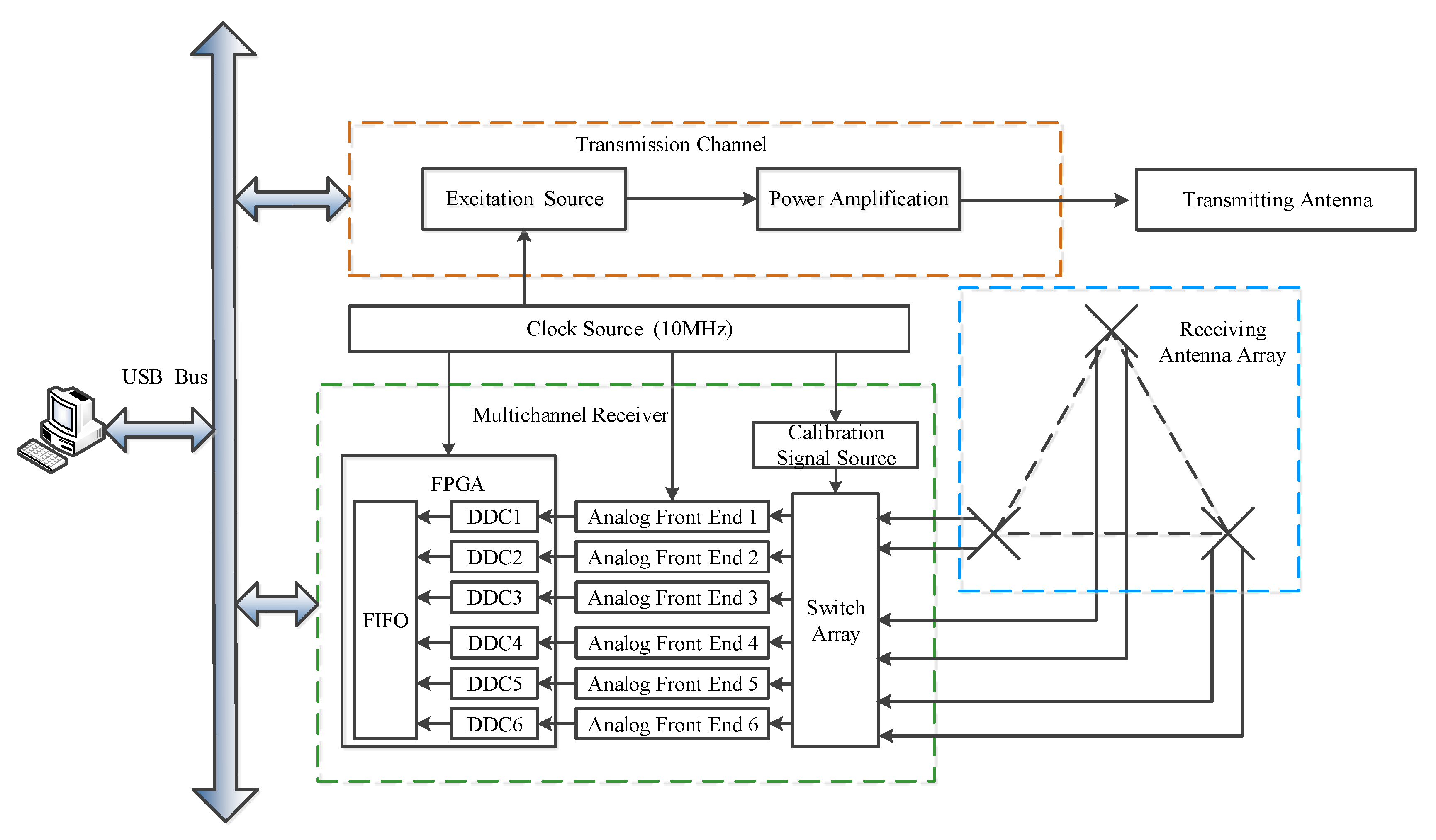

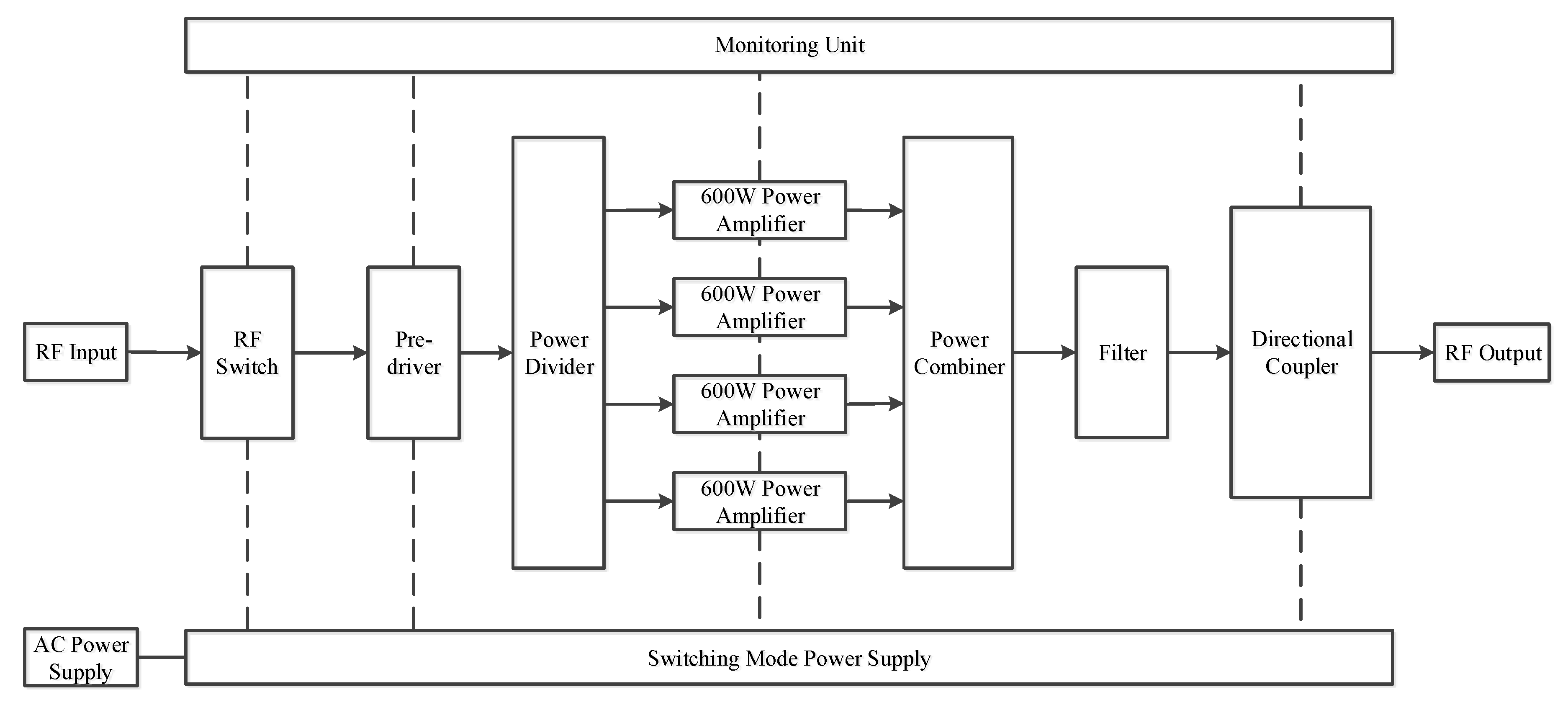
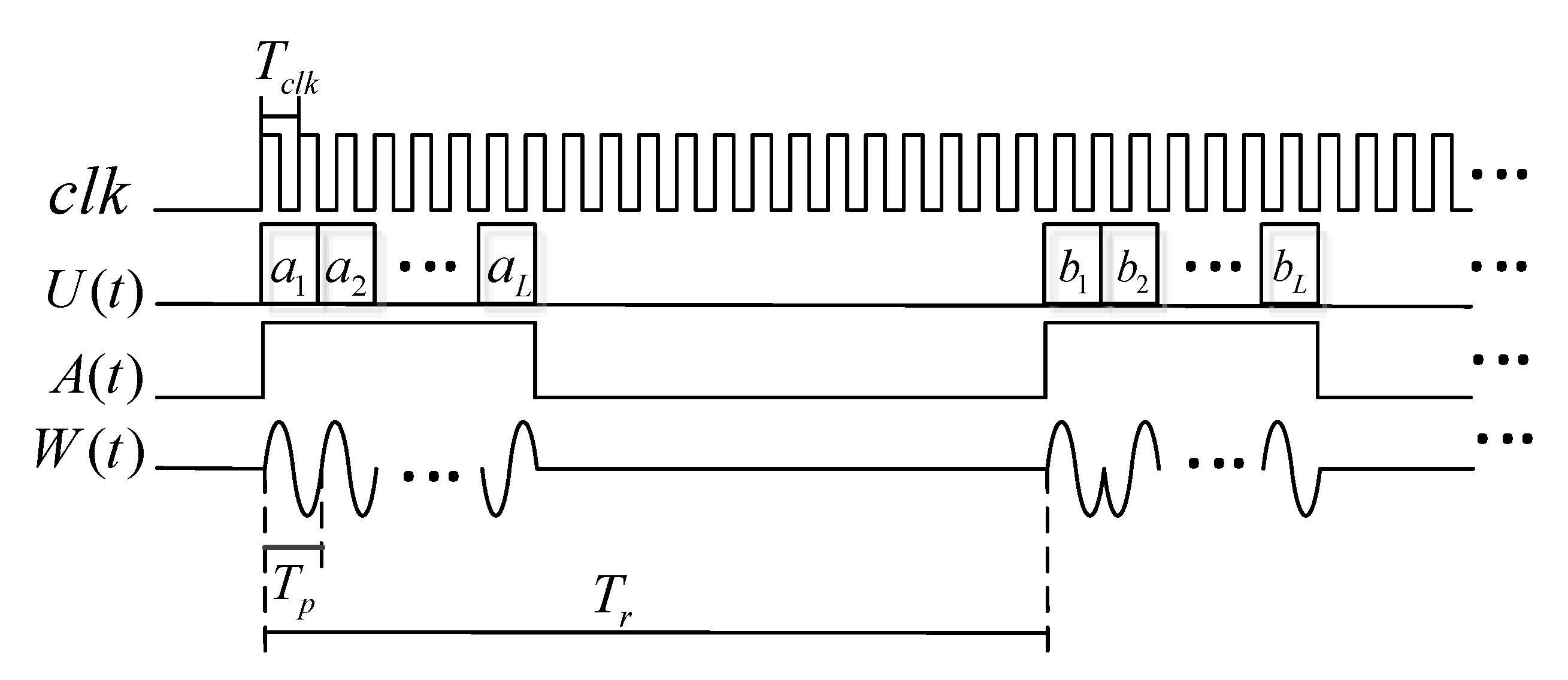



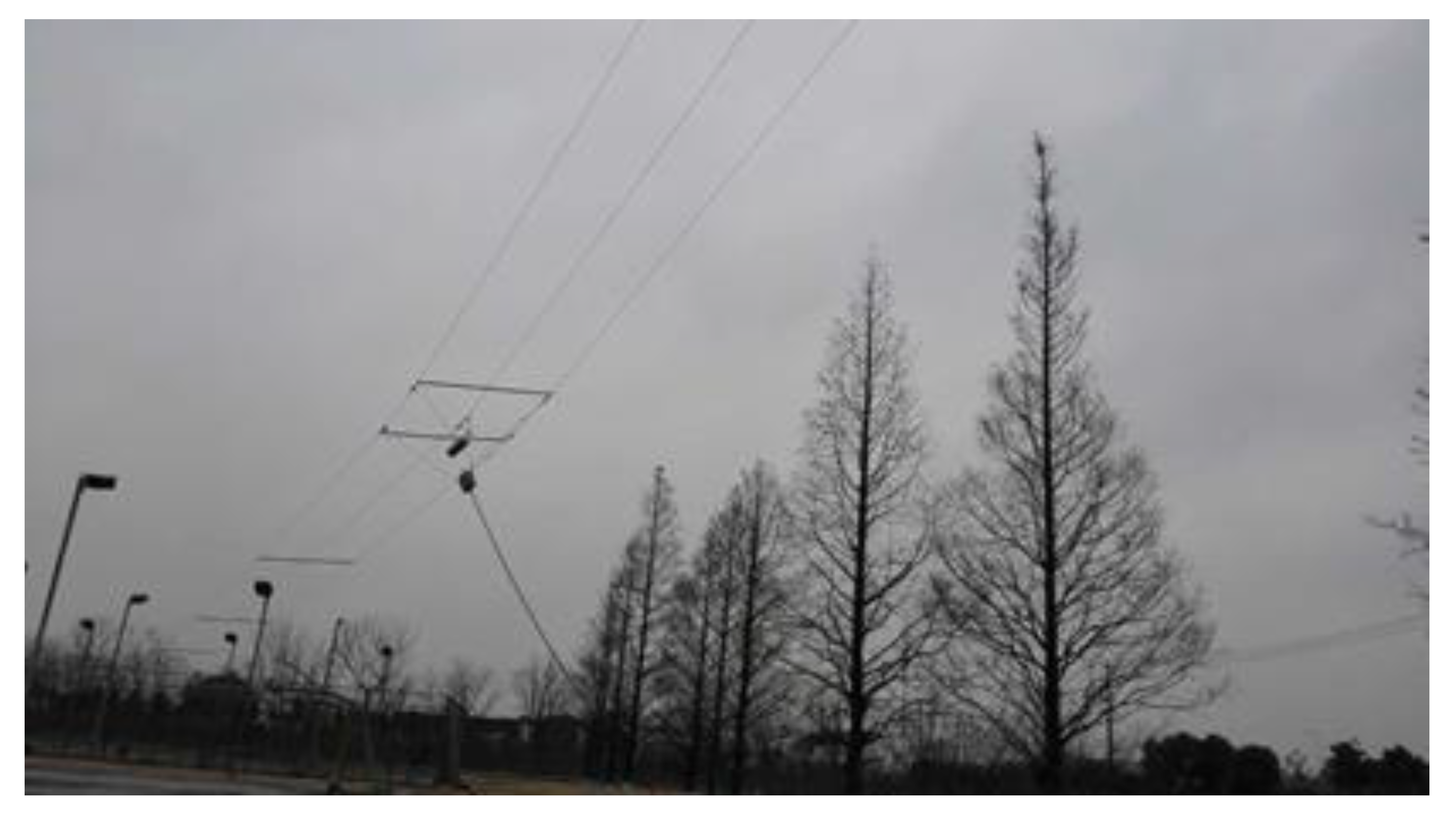
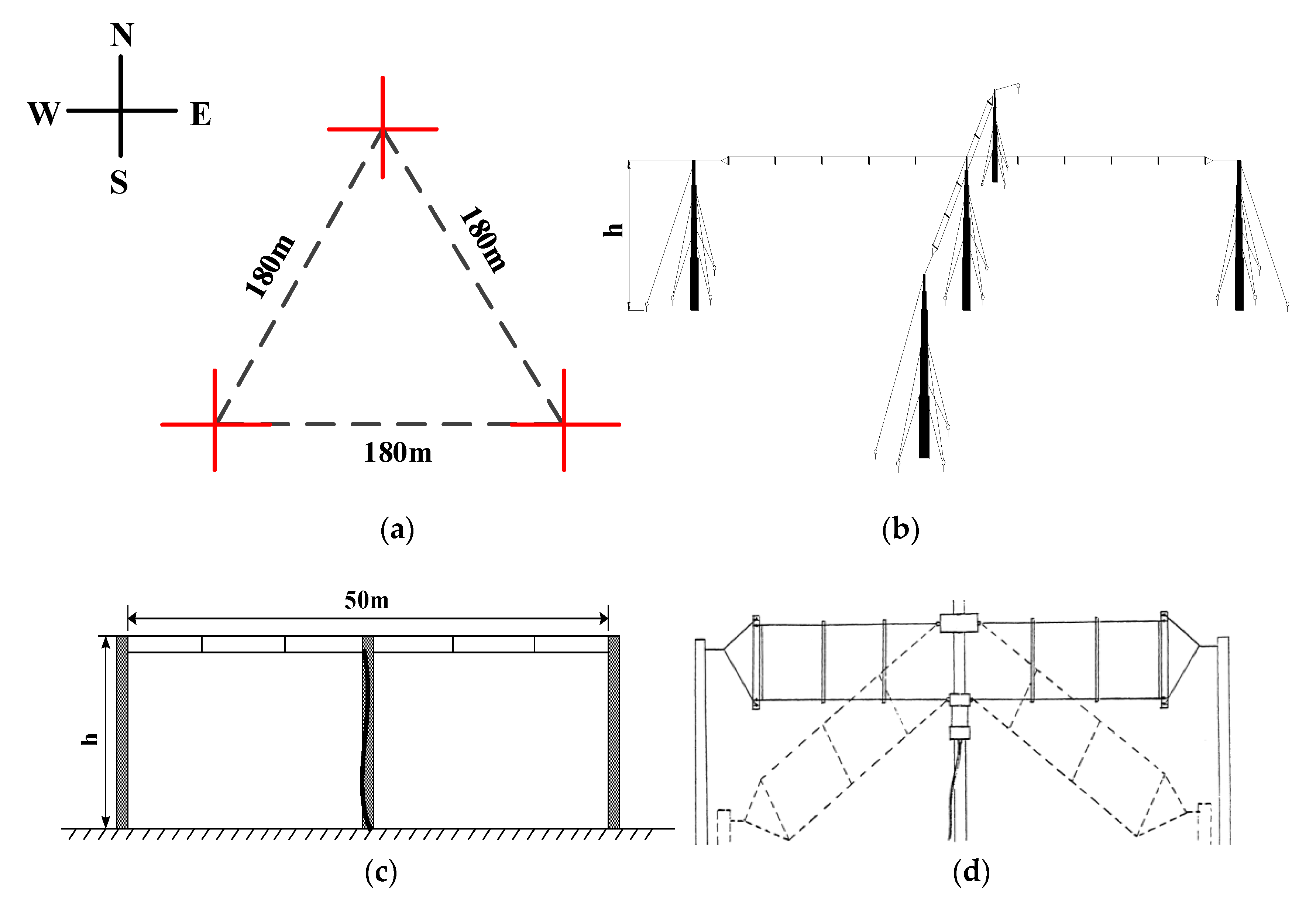


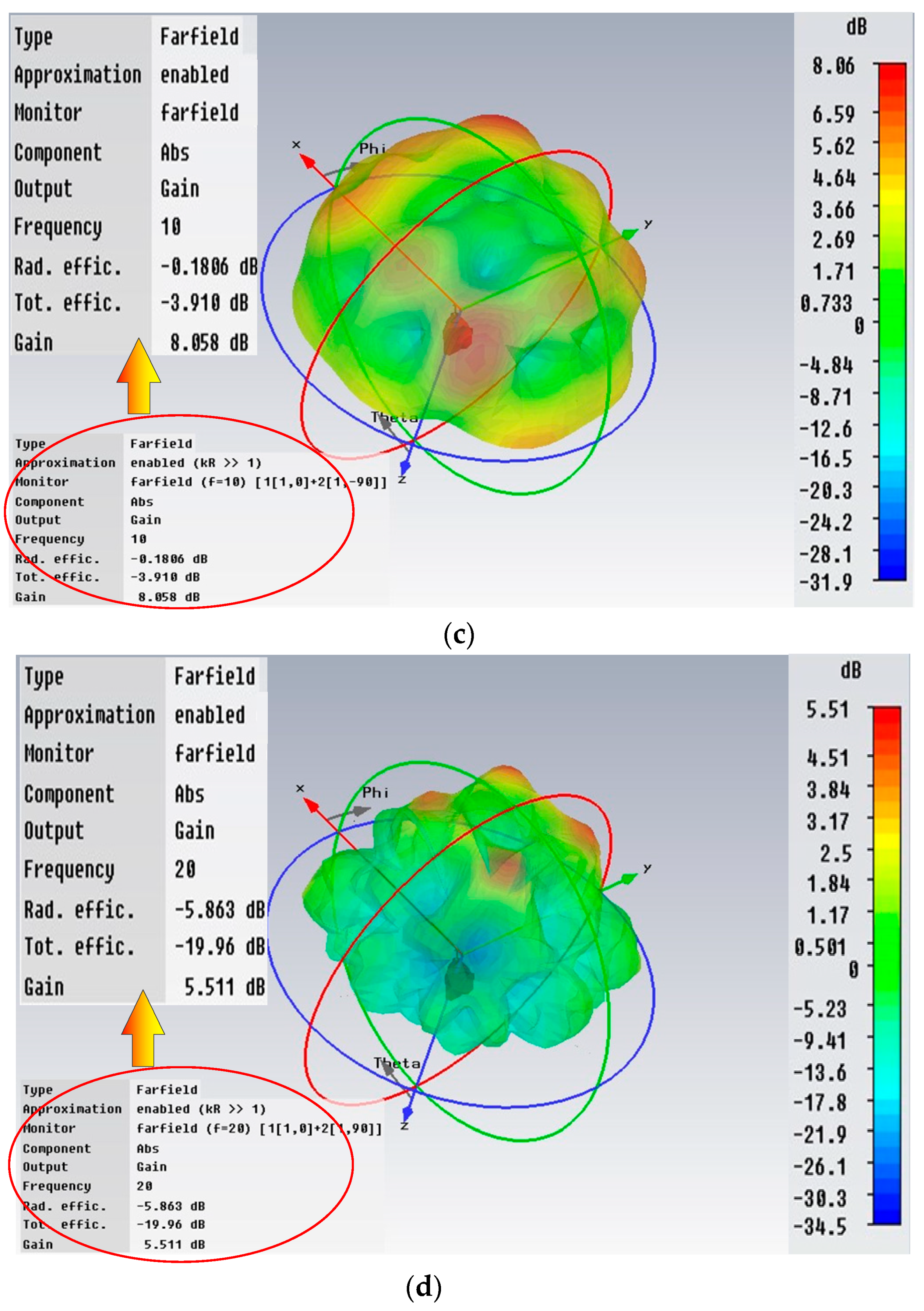
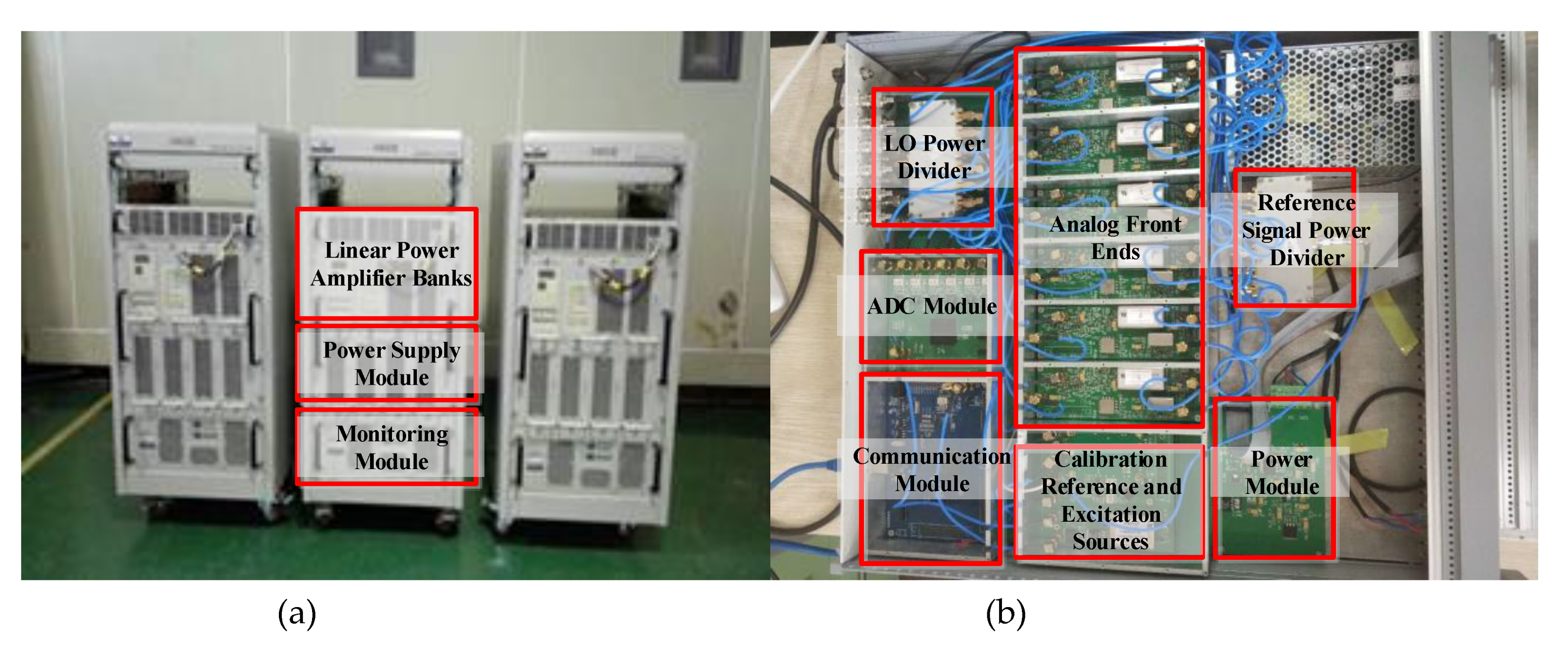


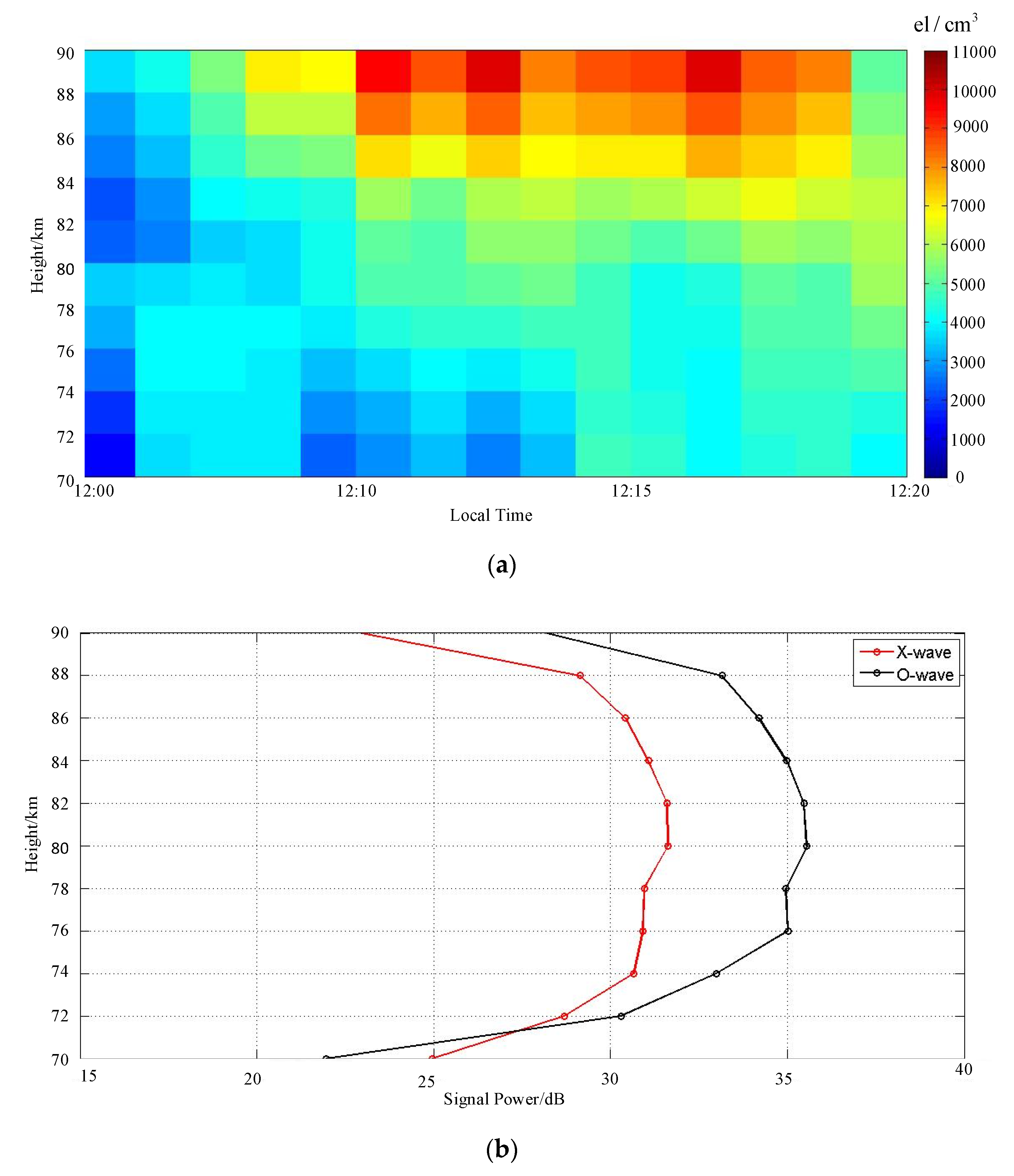


| Technical Indicators | Values |
|---|---|
| System function | Mesospheric/Ionospheric sounding |
| Working frequency | Mesospheric: 1.98 MHz/ Ionospheric: 2−20 MHz |
| Sounding range | Mesospheric: 70−100 km/ Ionospheric: 100−800 km |
| Peak power | Mesospheric: 6 Kw/ Ionospheric: ≤1 Kw |
| Waveform | Interpulse coding waveform |
| Duty cycle | 5% |
| Height resolution | 1.98 km |
| Time resolution | Mesospheric: ≤2 min/ Ionospheric: ≤4 min |
| Sounding mode | Mesospheric: Fixed Frequency/Ionospheric: Frequency sweeping |
| Sounding Direction | Vertical upward |
| Sequence | Values |
|---|---|
| The positive sequence A () | 1101_0001_0111_1011 |
| The complement sequence B () | 0010_1110_0111_1011 |
| Parameters | H = 2 m | H = 3 m | H = 4 m | H = 5 m | H = 6 m |
|---|---|---|---|---|---|
| Directivity Gain (dB) | 8.5 | 8.51 | 8.52 | 8.54 | 8.55 |
| Beamwidth (°) | 67.17 | 67.28 | 67.19 | 67.22 | 67.27 |
| VSWR. | 1.15 | 1.12 | 1.21 | 1.28 | 1.3 |
| Parameters | H = 4 m | H = 8 m | H = 12 m | H = 20 m | H = 25 m |
|---|---|---|---|---|---|
| Directivity gain(dB) | 7.76 | 7.99 | 8.24 | 8.33 | 8.37 |
| Beamwidth(°) | 70 | 70.26 | 70.92 | 72.86 | 74.59 |
© 2020 by the authors. Licensee MDPI, Basel, Switzerland. This article is an open access article distributed under the terms and conditions of the Creative Commons Attribution (CC BY) license (http://creativecommons.org/licenses/by/4.0/).
Share and Cite
Liu, T.; Yang, G.; Zhao, Z.; Liu, Y.; Zhou, C.; Jiang, C.; Ni, B.; Hu, Y.; Zhu, P. Design of Multifunctional Mesosphere-Ionosphere Sounding System and Preliminary Results. Sensors 2020, 20, 2664. https://doi.org/10.3390/s20092664
Liu T, Yang G, Zhao Z, Liu Y, Zhou C, Jiang C, Ni B, Hu Y, Zhu P. Design of Multifunctional Mesosphere-Ionosphere Sounding System and Preliminary Results. Sensors. 2020; 20(9):2664. https://doi.org/10.3390/s20092664
Chicago/Turabian StyleLiu, Tongxin, Guobin Yang, Zhengyu Zhao, Yi Liu, Chen Zhou, Chunhua Jiang, Binbin Ni, Yaogai Hu, and Peng Zhu. 2020. "Design of Multifunctional Mesosphere-Ionosphere Sounding System and Preliminary Results" Sensors 20, no. 9: 2664. https://doi.org/10.3390/s20092664
APA StyleLiu, T., Yang, G., Zhao, Z., Liu, Y., Zhou, C., Jiang, C., Ni, B., Hu, Y., & Zhu, P. (2020). Design of Multifunctional Mesosphere-Ionosphere Sounding System and Preliminary Results. Sensors, 20(9), 2664. https://doi.org/10.3390/s20092664







